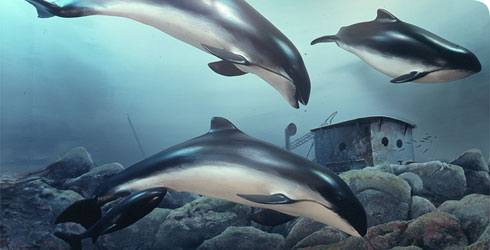Threats to whales, dolphins and porpoises
The issue of commercial whaling frequently grabs the headlines, but the harpoon is not the biggest threat to the world's whales and dolphins. These wonderful animals face many pressures as our exploitation of their ocean home escalates.
Sarah Lazarus, author of the book Troubled Waters: The Changing Fortunes of Whales and Dolphins, gives 5 reasons why whales and dolphins are in trouble.
Noise pollution
The oceans resound with noise produced by shipping, seismic exploration and sonar. Whales and dolphins rely on hearing for their survival and this clamour can deafen and even kill them.
The Whale and Dolphin Conservation Society has a campaign against noise pollution and their report, Oceans of Noise, takes an in-depth look at the issue.
Chemical pollution
Whales and dolphins swim in a toxic soup of man-made chemicals. As the seas absorb poisons, the world’s largest animals are fast becoming its most contaminated.
The Environmental Investigation Agency’s report, Global chemical pollution and the hunting of whales, dolphins and porpoises, considers the impact of toxins on both cetaceans and the people who eat them.
Climate change
As global warming heats the oceans and melts the polar ice caps, whales and dolphins could go hungry as their prey fail to thrive.
Read an overview of the possible impact of global warming on cetaceans from the Whale and Dolphin Conservation Society.
Fisheries
This is the greatest single threat. An estimated 300,000 whales and dolphins worldwide perish in commercial fishing nets every year.
The Humane Society of the United States has a campaign to reduce the impact of commercial fisheries on marine mammals.
Habitat loss
As marine industrial activity booms, and increasing numbers of ships ply their trade, whales and dolphins are feeling the squeeze.
The natural habitat of the Yangtze River dolphin is so degraded that the species may have been lost forever. It was declared functionally extinct in 2006, meaning if there are any animals still living in the wild, there may not be enough healthy individuals of the right sex to breed in sufficient numbers to save them from extinction.
Toolbox

Our fossil insect collection includes Rhyniognatha hirsti, the world's oldest fossil insect, dating back some 400 million years.
